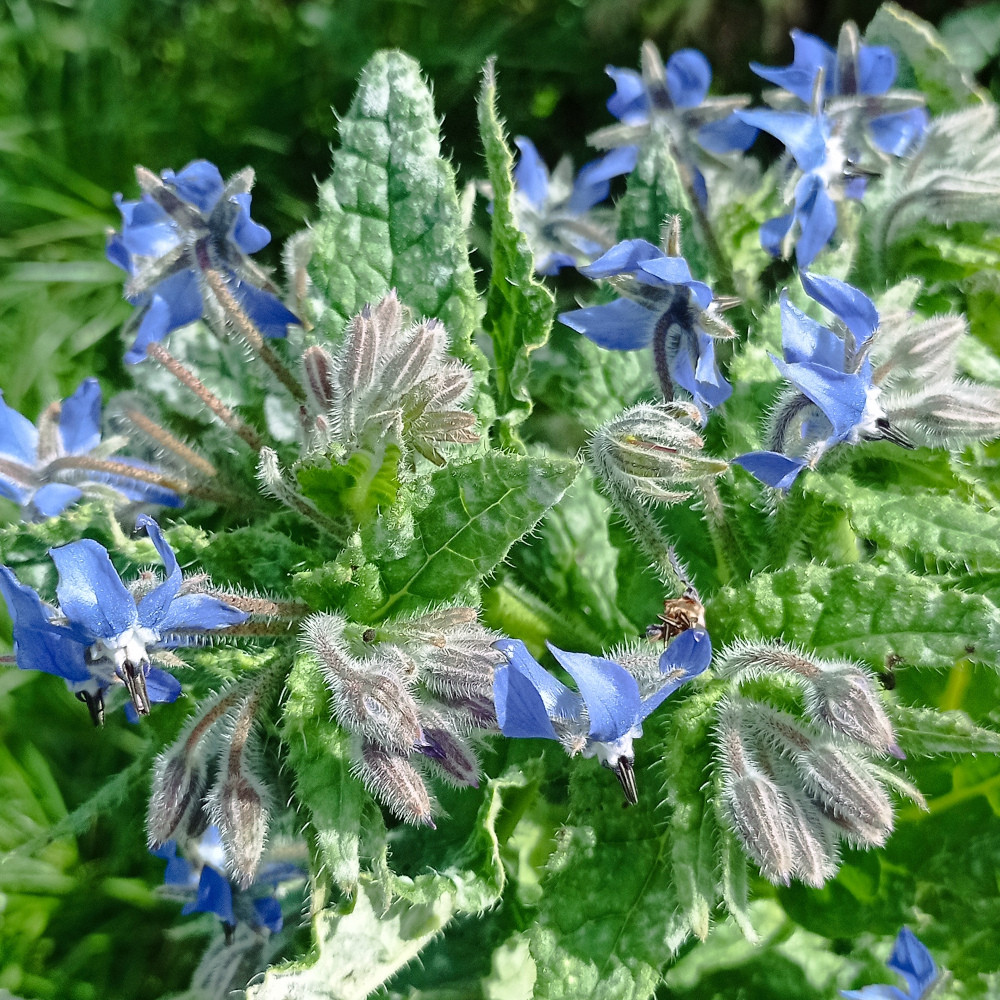Companion planting for a thriving spring garden

Spring is well and truly here so this week, let’s look at companion planting. This is a natural method of planting certain plants, herbs and flowers together that either helps one plant’s growth or attracts pests to them as an alternative offering, instead of the crop you want to look after. A typical example is growing clover as a mat around Brassica (cabbage family) plants so that pests find the clover first. Smell also plays its part, with the companion plant scent distracting the pests from smelling the crop you want to save. Read on for what to plant next to which crop and there is a handy chart at the end detailing what goes well together and what to avoid.
What to grow together
Carrots like growing next to lettuce and sun-loving plants like tomatoes and peppers. Carrots grow well in between rows of cabbages too.
Calendula (or Pot Marigold) has a strong scent and a gorgeous orange colour which may steer carrot root fly away from carrots too. The edible flowers keep asparagus beetle away too.

Borage is fantastic planted next to squash and strawberries and bees flock to the area to pollinate its numerous, edible blue flowers. It keeps away cabbage root fly and tomato pests too. Borage flowers are traditionally added to Pimm’s to make a summer punch.
Comfrey leaves are often added to the soil at planting time as a slow-release fertilizer but slugs hate the leaves so helps to keep slugs away if you spread them around the row when you sow seeds.
Nasturtiums are delightful climbing flowers with edible flowers and leaves but they are also adored by pests and insects. Pests will be attracted to nasturtiums and may save your precious plants now but still keep growing until the autumn, providing you with salad leaves.
Herbs like Basil are used fresh in pesto and adored in summer salads but did you know that growing it next to tomatoes keeps the aphids away? Dill repels cabbage moths and red spider mites. Mint is fantastic to repel all sorts of creatures from ants to cabbage moths, aphids and whiteflies but make sure not to plant it into the soil because mint spreads like wildfire. Either pick some leaves and lay these between rows at planting time or put mint in pots here and there to keep that fresh minty smell in the air.
The strong smell of garlic means cabbage moths and aphids find another plant to munch, and supposedly, it keeps rabbits away too.
What not to grow together
Sage is well-known as a plant to grow alone, with not many companions too close by. This is because its roots exude chemicals to stop other plants from growing too close. However, I have discovered that strawberries grown next to my sage plant do exceptionally well so there may be a few exceptions!
Rosemary is similar to sage in having a strong scent, and its volatile oil is super strong so do not grow it anywhere near a cucumber plant. Since the herb is the permanent one, make sure your cucumbers are planted at a good distance – say 4-5 feet (120-150 cm) away.
Fennel should never be grown near aubergine (Eggplant US) because it seems to thrive more than aubergine.
Try not to plant garlic close to your asparagus and your row of lettuces will not be too happy close to garlic either.
Although tomatoes and sweetcorn are both native to Mexico, they were never grown close together because the yield of the tomatoes is reduced. The 3 Sisters growing method was utilized to grow sweetcorn, beans and squash altogether in limited space. The beans fix nitrogen into the soil, which the corn and squash can utilize, and the beans climbed the stems of the sweetcorn while its flowers bring pollinators in. The pumpkins and squash mature slightly later than the sweetcorn and are easy to pick once the corn is harvested so all 3 plants do well together. Just make sure this is part of your crop rotation and do not plant these 3 in the same space for a few years.
The final one surprised me. Potatoes do not like growing next to sunflowers, possibly because a tall row of them may shade them and the higher stems take all the goodness out of the soil.
| PLANT | Good companions | Do not grow next to: |
|---|---|---|
| Asparagus | Calendula, grown close to the bed. Basil and parsley repel asparagus beetle too, so a row of colourful calendula early in spring with pungent-smelling basil and parsley close to the bed should distract the beetle from your precious stalks. | Garlic |
| Beans (French, Purple, Green, Pole etc) | Nasturtiums attract aphids and bean pests away from the beans.
Sweetcorn. Grow them up individual stalks, which can act as a support. Tendrils will attach naturally. |
Beans do not grow well next to onions (or any from this family) although they like the same rich soil. |
| Broad Beans | Poached Egg Plant (Limnanthes) will tempt the blackfly to its flowers if planted close to beans. | Onions (or any from this family) tend to have a bad effect on the beans. |
| Cabbage family | Clover, chard, celery, spinach, or beetroot. Although rows of sprouts, cauliflower and Kohlrabi enjoy the same soil, do not plant too closely because pests on one plant will spread easier. | Melons or potatoes.
Grapes and strawberries do not enjoy shade cast by cabbages and the leaves of the herb mustard do not seem to help cabbages to grow so avoid them too. |
| Carrots | Marigolds distract the carrot root fly. Other plants are cabbages (and any of this family – Brassicas) tomatoes, onions, and peppers. | Neither dill nor fennel are good neighbours; they may stunt the growth of the carrots. |
| Cucumber | Tomatoes and cucumbers are good together in greenhouse conditions and outside varieties love the same soil and watering too. Add lots of comfrey leaves for nutrition. | Fennel and cucumber do not like each other and fennel usually wins so plant them wide apart. |
| Garlic | Tomatoes grow well with garlic and it likes close to a fruit tree, but not in the shade. Brassicas are ok too. | Asparagus and lettuce do not thrive next to garlic. |
| Onions (and Leeks) | Good in a row next to carrots for the strong smell to distract carrot root flies from the carrot scent. | Asparagus or sage. Avoid beans too because the onion is known to kill off beneficial bacteria in their roots. |
| Strawberries | Borage seems to give a unique sweetness to fruit if planted close by.
Sage flowers attract bees to pollinate. |
Cabbages or any plant in this family do not thrive next to strawberries. |
| Peas | Herbs like coriander (cilantro US, or quick-growing lettuce or spinach.
Nasturtiums offer protection from aphids because these pests ignore your tomatoes in favour of these. |
Onions, chives, leeks and any member of the onion family. |
| Squash | Beans and peas add nitrogen as they grow and the squash (or pumpkin) loves this.
Borage is said to sweeten the taste of strawberries and also improve the flavour of the squash. |
Cabbages or Brassicas (anything like sprouts, cauliflower, kale etc).
Squash does not like growing with potatoes either. |
| Sweetcorn | Squash, pumpkin, and beans. See the 3 Sisters method described above. | Cabbage family are best planted far away. No cauliflower, sprouts or kale. |
| Tomatoes | Rows of lettuce between rows. Basil and Oregano love the same conditions and also attract pests to them due to their strong herbal smell. Nasturtiums and Borage are good to distract pests too. | No cabbages, kohl rabi or sprouts, because they have long tap roots to source nutrients and your tomato harvest, will be affected by the loss of nutrients. |
Conclusion
Now you know that some plants can attract pests away from your crops as a decoy and that some plants should never be grown together. This should help with your spring planting. Grow carrots, peas and onions outdoors now and tomatoes in the greenhouse. Next week we will discuss making homemade compost in your backyard, your garden or your allotment and the ways to fix common problems.


